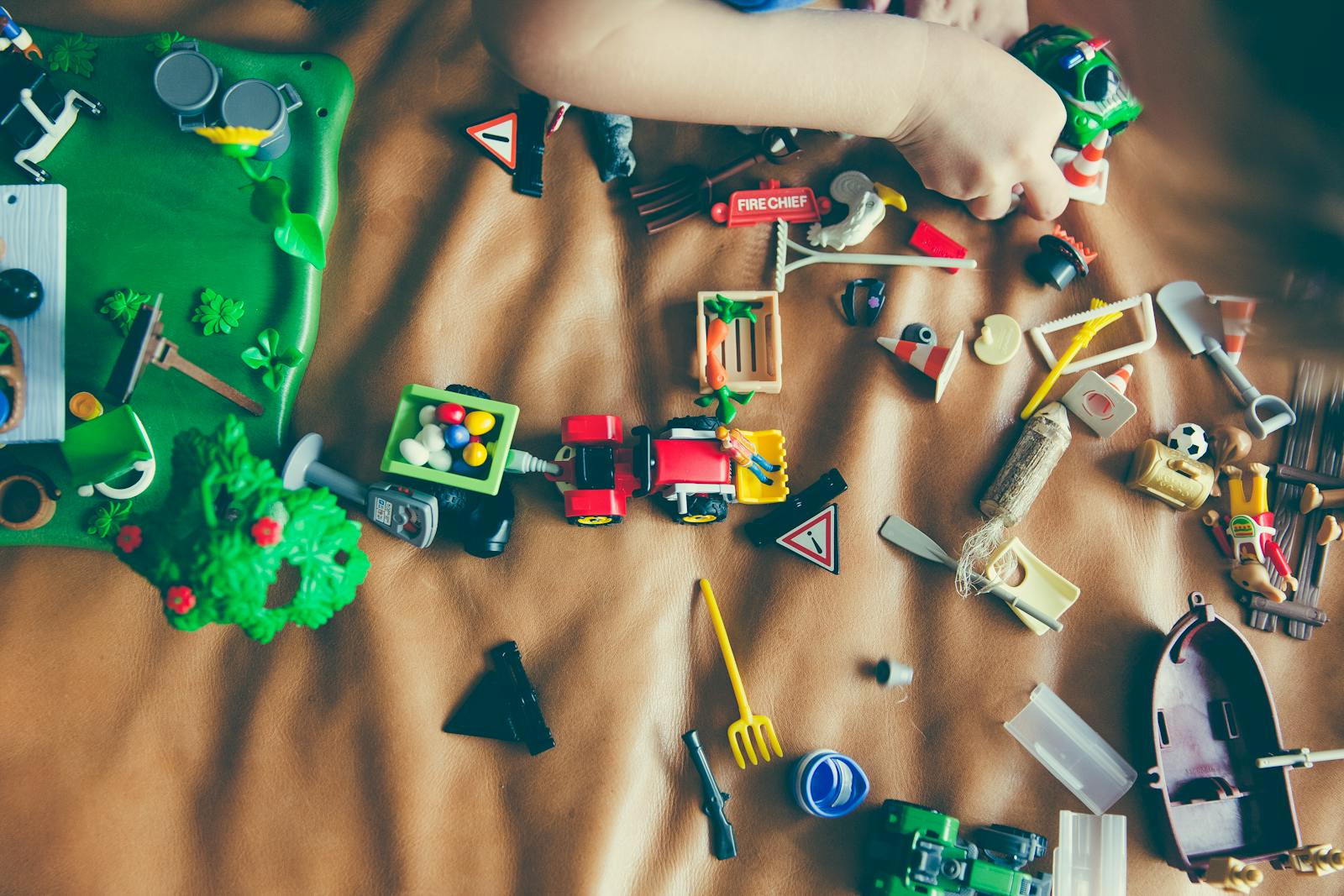
The games and toys industry is an ever-evolving landscape, continually shaped by the changing preferences of consumers, technological advancements, and global trends. Understanding the current trends in the games and toys industry is essential for both industry professionals and consumers. This description provides an overview of the current trends in the industry, offering insights into what’s driving innovation and shaping the future of play.
In today’s dynamic market, there’s a noticeable shift towards combining traditional play with technology. Smart toys and augmented reality (AR) games are gaining popularity, offering children interactive and educational experiences. These tech-infused toys not only entertain but also facilitate learning, creating a bridge between the physical and digital worlds. Sustainability has become a cornerstone of the industry, with a growing emphasis on eco-friendly and ethical practices.
Here are some of the current trends in the games and toys industry:
1. Digital Transformation: The industry has seen a significant shift towards digital products and experiences. Mobile gaming, online multiplayer games, and virtual reality (VR) gaming have gained immense popularity. Subscription-based gaming services and cloud gaming platforms have also emerged, changing the way consumers access and play games.
2. Educational and STEM Toys: Parents and educators are increasingly looking for games and toys that not only entertain but also educate. STEM (Science, Technology, Engineering, and Mathematics) toys have become a significant trend. These games and toys help children develop problem-solving, critical thinking, and technical skills while having fun.
3. Sustainable and Eco-Friendly Toys: There’s a growing awareness of environmental issues, and this is reflected in the toy industry. Manufacturers are developing toys using eco-friendly materials, reducing plastic usage, and focusing on sustainable production methods. Consumers are looking for toys that are not only safe for children but also for the planet.
4. Board Games and Retro Gaming: Board games and tabletop gaming have experienced a resurgence. The social nature of board games and the desire for face-to-face interactions have led to a revival of classic board games and the creation of new, innovative ones.
5. Inclusivity and Diversity: The industry is moving towards greater inclusivity and diversity in toy design and game content. More toys and games are being created to reflect diverse backgrounds, cultures, and abilities. This trend aims to ensure that all children can find toys and games that resonate with their experiences.
6. Augmented Reality (AR) and Mixed Reality (MR): AR and MR technologies are being integrated into toys and games. These technologies enhance play experiences by blending the digital and physical worlds. They are used in games and toys that interact with mobile apps or dedicated devices, creating immersive and interactive play.
7. Nostalgia-Inspired Toys and Games: Nostalgia continues to be a strong driver in the industry. Retro-inspired toys, games, and collectibles often target adults who want to relive their childhood experiences. Classic video game consoles and action figures from the ’80s and ’90s are making comebacks.
8. Gamification of Learning: Educational institutions and parents are incorporating elements of gamification into learning. Educational apps, interactive learning games, and gamified curriculums are being developed to make learning more engaging and enjoyable for children.
9. Collectibles and Limited Editions: Collectible toys, figurines, and limited-edition game releases have become a significant trend. Collectors are willing to pay a premium for unique and rare items, and companies are leveraging this by releasing exclusive or limited-edition products.
10. Health and Wellness Gaming: As awareness of physical and mental health grows, there is a trend towards games that encourage physical activity and well-being. This includes fitness games, mindfulness apps for children, and games that promote positive mental health.
FAQ:
What are the technology trends in the games and toys industry?
Smart Toys Market Trends: Smart toys allow toy producers to expand their revenue sources by designing unique items that combine technology and pique customer interest. Construction toys promote creative problem-solving abilities while assisting in spatial development, making them popular with educators and parents.
How technology has changed the toy industry?
One of the most significant impacts of technology on the toy industry has been the development of electronic toys. These toys, which incorporate computer chips, sensors, and other advanced technologies, provide children with a new and interactive way to play.
How has the toy industry changed compared to the past?
Toy retailing has undergone three significant changes in its social organization over the past century. First, the size, economic power, and location of stores have changed. Retail stores have become bigger, more powerful than manufacturers, and more spread out over suburban and quasi-rural areas.
What are the challenges of the toy industry?
What are the challenges facing India’s Toy Industry? Highly Fragmented: The toy industry is still highly fragmented, and dominated by local producers. 90% of the market is unorganized and 4000 toy industry units are from the MSME sector. They lack the innovation and resources to invest in equipment and technology.
How do toys help social development?
Toys Foster Imagination: The games and toys allow children to create and explore new ideas and scenarios, which in turn helps them to develop empathy and problem-solving skills. Toys that encourage imaginative play, such as dress-up clothes or pretend play sets, can help children develop their creativity and social skills.
What industry are toys in?
The toys and games industry is comprised of a wide variety of products intended mainly, but not exclusively, for the entertainment of children. The market focuses on traditional segments like dolls, construction sets, and action figures, as well as card and board games. Educational toys continue to thrive as parents and educators seek products that promote learning while children have fun. STEM (Science, Technology, Engineering, and Mathematics) toys remain in demand, helping children develop essential skills for the future in an engaging way.
Why are games and toys important for children?
Every child’s cognitive development during the most important childhood years. Games and Toys stimulate concentration levels and enhance attention span and memory. In turn, cognitive development during the childhood years improves children’s ability to approach language and math skills in a fun way.
Importance of games and toys in a child’s early development
Children are the key to the future and kids love their toys. Is there a link between childhood development and the toys surrounding a child? Do you remember your favorite toy growing up? Whether it was a stuffed teddy bear or a plastic GI Joe, we’ve all got fond memories with toys. What you probably aren’t aware of is how toys influenced your education and childhood development over the years. In fact, there is a reason why preschool kids learn through toys and fun art. Toys have a magical power to improve a child’s abilities and skills, preparing them for life.
Here are some important during childhood development.
Experts agree with the facts!
Children learn by playing and exploring, where toys are central instruments that encourage them to discover the world. That’s why toys offer much excitement, joy, and happiness which can build a child’s self-esteem.
In this topic, we’re going to break down why toys are so important during childhood development.
Motor Skills: Motor skills are our favourite, here at kidsmodelistamagazine. We think toys that engage with a child’s physical abilities are a good exercise to improve their motor skills. Whether they’re coloring, dressing a doll, or maneuvering the environment on a ride-on, children use their sense of touch and sense of sight. Using baby walkers, tricycles, bicycles, and toy cars can boost their gross motor skills, or what scientists term physiognomy. Additionally, toys also allow children to discover coordination and balance by staying physically active, which can prevent a lot of complications as they grow up adopting a healthy lifestyle.
Toys motivate children from an early age, to use their hands and feet as a form of discovery, where colours and sounds begin to create learning experiences. Once a baby learns how to crawl and sit, the toys encourage them to move. You would have noticed your child muscling through to reach their favorite toys.
Emotional Development: Games and toys allow children to explore creativity and express their emotions better. Whether the child is role-playing with different characters and costumes, or rocking a baby doll to sleep, their space is enriched with friendly toys. Children begin to employ their imagination and expand their horizons just through playtime. They often invent fantastical worlds full of abstract ideas, encouraging their capacity to interpret and create symbols associated with a mature personality with rules of their own.
For a child, toys are an effective way to step-by-step childhood development. Adults often associate toys with something that’s sold at a store. But for children, a toy resembles a whole new universe. They are objects that they can feel and touch, transforming their experiences like playing with clay, paint, play dough, action figures, and ride-on cars. Combining these experiences with childhood development leads to effective decision-making skills being honed at an early age. Better yet, their imagination is never put to rest.
Social Development: Besides improving a child’s language, toys also inspire social skills that create a fuller understanding of society at large. Toys invite children to interact with adults and peers, neighbors, and playmates. The simple act of playing with another child enables them to create better experiences for themselves. They learn from their experiences interacting with other children over toys and playthings. Children are taught respect, sharing, cooperation, and discipline by making interaction with each other the central focus of playtime. Toys can help children bond with each other and with adults of all ages.
Cognitive Development: Toys also nurture a child’s cognitive development during childhood years. Toys can stimulate their concentration levels and improve their attention span and memory. Board games, drawing boards, and musical instruments are pivotal to childhood development. The toys are key to their future autonomy. Take the simple act of assembling building blocks or riding a bicycle outdoors. Children benefit from cognitive development encouraged by toys that can help them grow. Cognitive development during childhood years improves the child’s ability to approach languages and math skills in a fun manner.
Emotional Development: Apart from physical growth, the pandemic taught us how we need to be cognizant of our surroundings from an emotional well-being point of view. This is why nurturing that part of the brain from an early stage becomes crucial.
Toys are responsible for children’s emotional growth. Think of that special toy that your child doesn’t go to sleep without. It’s a source of comfort and one must keep encouraging them to create that bond with their favourite toys.
Expressing themselves: One of the biggest challenges parents face is figuring out what’s going on in the mind of a toddler! Don’t we all wish we could decode their brain every time they throw a tantrum?!
Art comes to your rescue here. Simply use crayons, paints, and an empty drawing sheet and tell your child to express their emotions. Let them make a mess or take it slow and watch how you will learn what your child is going through.
Choosing the right kind of toys: This is the tricky part! The amount of time your child will spend playing with toys and being healthy is directly correlated to you choosing the right kind of toys.
How to spot the right toy?
● Is the child playing with the toy or is the toy playing with the child?
● Can the child play with the same toy in more than one way?
● Is it sustainable? (should naturally decompose and not land up at the bottom of an ocean or landfill).
Children need toys. Period. And one can safely conclude that “Toys are children’s words, and Play is their only Language”.
The resurgence of board games and tabletop gaming is a noteworthy trend. Families and friends are rediscovering the joy of face-to-face gameplay, seeking opportunities to bond and create lasting memories. This trend also extends to the hobbyist and collectible market, where board games, trading card games, and miniatures are experiencing a renaissance.
As the world becomes increasingly digital, concerns about screen time have led to a demand for toys and games that encourage physical activity and outdoor play. Toys that promote physical well-being and engage children in active play are gaining popularity, encouraging a healthier and more balanced lifestyle.
The games and toys industry is not just about products but also about experiences. Subscription services, mystery boxes, and escape room kits are on the rise, offering consumers new and exciting ways to enjoy games and toys beyond the initial purchase.
These current trends in the games and toys industry reflect a dynamic and forward-thinking landscape. From embracing technology to prioritizing sustainability and diversity, the industry is evolving to meet the changing needs and desires of children and parents alike. Staying informed about these trends can help consumers make informed choices and industry professionals continue to innovate and shape the future of play.
Please note that these trends were observed as of September 2021, and the games and toys industry is highly dynamic. New trends may have emerged, or existing trends may have evolved since that time. The industry is continually adapting to technological advancements, changing consumer preferences, and global events.
Did you know that toys are so important in childhood development? I’m sure you did.
Feel free to browse the kidsmodelista shop to pick out toys that are centered on a child’s development and great experiences.


































